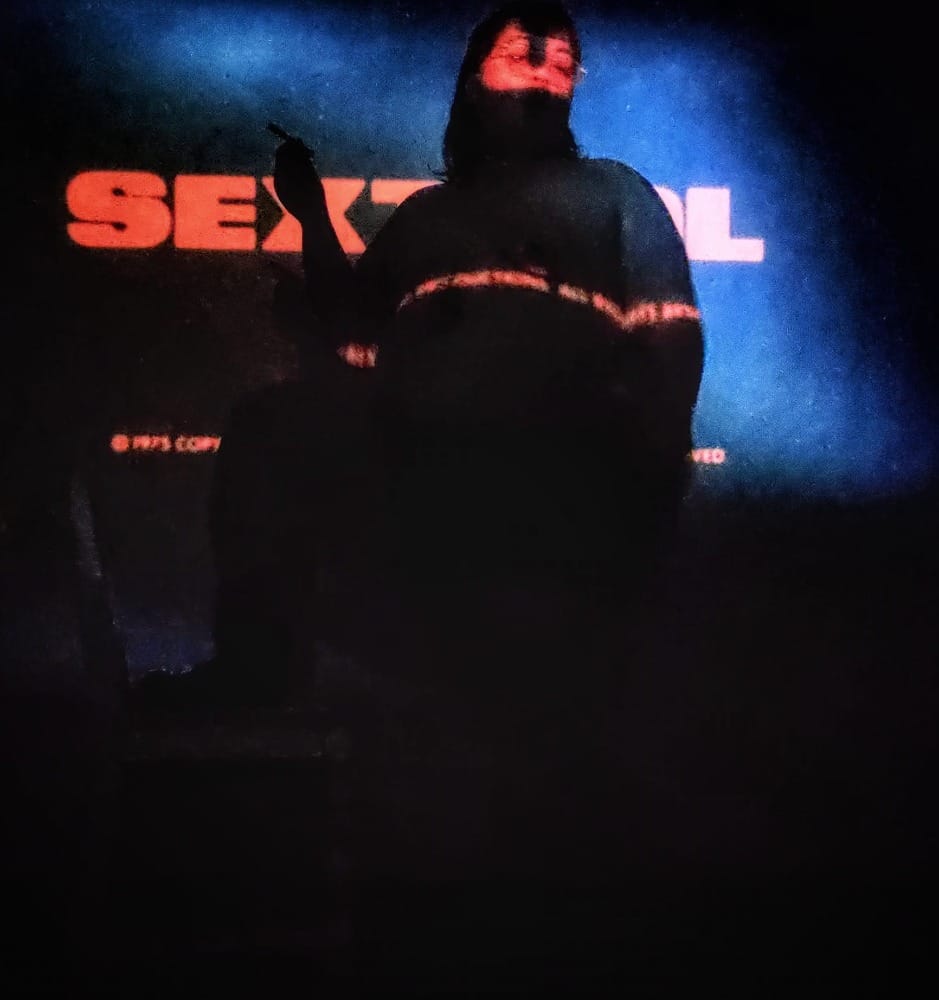What to Watch After LOVE LIES BLEEDING
Four films to watch next if you enjoyed LOVE LIES BLEEDING. (As spoiler-free as I could manage.)

BLOODSISTERS (Michelle Handelman, 1995)
Much has been made of the inclusion of a paperback copy of Macho Sluts as a background prop in LOVE LIES BLEEDING. Macho Sluts is a favorite of mine, so I was thrilled to see it included and curious about what it implied.
Macho Sluts is essentially a leatherdyke fantasy tome, a literal grimoire of the most outré things a horny queer person could summon into their bedroom. While BDSM does not have an overtly explained presence in BLEEDING, there is a kaleidoscope of queer fetish imagery visible whenever we watch Jackie from Lou’s perspective. Glass apparently liked the idea of Lou finding Macho Sluts at a bookstore and getting her mind blown; Lou’s fantasies indicate that something from the book indeed stuck with her.
I cannot recommend Macho Sluts as a starter text for those curious about leatherdyke culture in the 80s. It’s a purposefully transgressive piece of work, and it’s not written for people who aren’t already comfortable with the lifestyle. If you take it as a manual, you’re going to be confused and in a great deal of unexpected pain. (Do you remember when all those people ended up in the ER because they lost dildos inside of themselves while trying to re-create 50 SHADES OF GREY? There’s a reason we’re all so into classes.)
I would have you follow up a viewing of BLEEDING with BLOODSISTERS, the ultimate documentary portrait of the late 80s/early 90s leatherdyke scene. You can see Califa explain his work in BDSM literature for yourself and also get a full taste of the scene politics, pornography, and precisely-ripped shirts that birthed a thousand Lous. BLOODSISTERS is a fun and thorough time capsule of transgressive queerness, and it also has some public scenes that are pretty hot. If you enjoy what you see there, maybe give Macho Sluts a whirl. And if you borrow it from the Leather Archives, hit me up for an extremely personalized tour of the basement bathroom.
(Note: the movie features Pat Califa, who was publicly known as a female leatherdyke when it was filmed; today Patrick Califa is a transmasculine dude and should be acknowledged appropriately.)
NAKED KILLER (Clarence Fok, 1992)
If I have one criticism of LOVE LIES BLEEDING, it's that it was not as unhinged as I was led to hope. If you want to watch a truly deranged tale of sapphic murder-for-hire, NAKED KILLER is waiting for you.
NAKED KILLER is a Clarence Fok special: a morally compromised and deeply confusing tale of female assassins giving cunty monologues, flirting with each other, fucking each other, and trying to stab each other with elaborate yo-yo knives. It has an unpleasantly casual fascination with sexual assault that makes my skin crawl. It also doesn't make any sense, and I'm honestly unable to recount the plot to you with any confidence.
But! If you liked the sleaze you tasted in BLEEDING, there's an orgiastic buffet waiting in NAKED KILLER. It's full of hot queer women gleefully tormenting each other in sexy ways as a sleazy neon Hong Kong Action aesthetic pulsates in the background. It's the kind of movie that wants you to jerk off to it, but also wants you to know that you're possibly a bad person if you're aroused by it. If you're the kind of person who thinks this parking garage shootout slaps, you'll find it a worthy guilty pleasure. Make your own choices.
SAINT MAUD (Rose Glass, 2019)
It’s easy to forget that Rose Glass had a movie out before LOVE LIES BLEEDING, but gorehounds with religious trauma have a soft, bloody spot in their heart for the unsettling and creepily erotic SAINT MAUD.
Compared to the bombast of LOVE LIES BLEEDING, SAINT MAUD at first feels peculiar and stilted. However, Glass is a distinctive filmmaker with a unique approach to exploring desire, and watching these films back to back puts them into an interesting conversation. If LOVE LIES BLEEDING is about the toxic rush of codependent sexual abandon, SAINT MAUD is a macabre portrait of those who punish themselves for desiring pleasure.
Both movies are wry and cruel on the surface, but that slowly gives way to richly-detailed character studies that are uninterested in prescriptive morality. Glass is bored by discussing whether her characters are good or bad, but focused on understanding the worldview and life circumstances that twisted them. What drives one person to deny themselves everything, and another person to abandon themselves to it?
Most importantly, both movies are about the addictive danger of living in a fantasy. Perhaps that's why both movies have endings where that fantasy abruptly cuts to the brutal reality that underpins it. I still don’t know what to make of the ending of SAINT MAUD. Is it better to serve in heaven or rule in hell? The answer comes from many perspectives within the filmography of Rose Glass, and it ultimately remains unclear.
JENNIFER’S BODY (Karyn Kusama, 2009)
If you evaluate it as a horror movie, yeah, it's weirdly-paced and anti-climactic. However, if you approach it as a queer tragedy, it reveals itself to you. The story isn't written in the plot, but in the emotional beats of a toxic codependence. What does it mean when you need love so badly it makes you a monster? And what happens to the person that pours their love into you, stranded in that monster's wake?
In my opinion, the impact of this movie comes down to your understanding of the ending. A lot of people read it as a moment of liberation, a release for a protagonist that suffered a monster to live and stole its power to survive. But take a closer look: is it freedom, or is it just servitude to a different kind of darkness?
